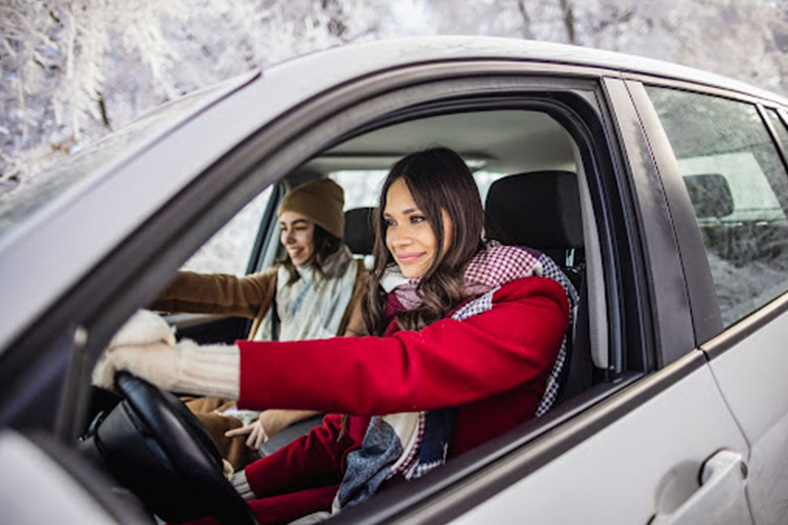Car Accident: Winter Driving Collision Resource
Driving in Colorado in winter is one of the most dangerous times to get on the road. Inclement weather in the form of snow, sleet, and ice creates the perfect storm for car accidents to occur, even for the safest of drivers.
According to the U.S. Department of Transportation’s Federal Highway Administration, every year, 24% of vehicle accidents related to weather occur on snowy, icy, and slushy roadways. Over 15% of these accidents occur during snowfall and sleet.
Knowing how to properly prepare yourself and your vehicle for inclement weather and how to stay safe on ice is key to avoiding a winter car accident. Read on to explore our winter driver collision resource, and learn more about how to stay safe on Colorado roadways during inclement weather.
Bachus & Schanker Wins – Over $1 Billion Recovered
Common Reasons That Car Accidents Happen In the Winter
While car accidents increase during the winter because of inclement weather, a lack of knowledge on the part of drivers also contributes to increased accidents. It’s essential to understand how to navigate your vehicle so that you can stay safe during all types of changing road conditions. Let’s take a look at some of the common reasons car accidents happen in the winter.
Driving Too Fast On Snow And Ice
Under normal conditions, driving above designated speed limits poses a significant hazard for drivers and their safety. During snowy and icy conditions, these hazards are multiplied tenfold by speedy drivers. Colorado has defined speed limit regulations on all roads under the Colorado Revised Statutes (CRS) § 42-4-1101. These regulations are especially enforced during winter inclement weather.
Following Too Closely And Not Stopping In Time
Colorado law also observes regulations regarding following too closely to other drivers. Under CRS § 42-4-1008, drivers are required to be mindful of their following distance to avoid accidents like rear-end collisions.
During inclement weather, it is especially important to keep your distance, as slippery roads can cause you to have a delayed stop time due to the reduced traction between your brakes and your wheels.
Not Braking Safely
It’s not enough to simply step on the brakes when you’re driving on snowy and slippery roads. The reduced traction on icy and slick roads can cause your vehicle to slide instead of stop outright. It’s important to learn how to brake properly during inclement weather.
When you’re approaching a stopping point, always come to a gradual stop instead of a sudden stop. In instances where you need to use your anti-lock brakes or ABS system, it’s important to understand how your system operates so that you can use it properly if the time comes.
How to Drive Safely During the Winter in Colorado

In most circumstances, an ounce of prevention is worth a pound of cure. This is especially the case when it comes to driving safely on roadways during inclement weather. Keep the following winter driving tips in mind to ensure that you’re doing your part to remain safe and minimize potential road accidents.
Stay up-to-date on the weather
During the winter months, it’s important to stay up-to-date on the weather so that you know when inclement weather is on its way. Using resources like state weather notification apps and keeping updated with notifications from the Colorado Department of Transportation will ensure that you always know when inclement weather is on the horizon. Additionally, the state’s website, COTrip.org, allows visitors access to the many traffic cams around the state. Tapping into these traffic cams allows you to observe the condition of roads for yourself so that you can better plan your day.
Properly equip your vehicle for winter weather
Vehicles that are not prepared for wintry weather are more likely to get into an accident than vehicles that are properly equipped. Equipping your vehicle may mean changing out tires, using tire chains, or keeping up with your overall regular maintenance. Take the following steps to ensure your vehicle is ready for winter.
- Use all-weather tires or snow tires and adhere to local traction and chain laws
- Understand when Colorado’s Chain Law goes into effect
- Ensure your windshield wiper blades are working properly
- Check your battery and ensure that it’s in good working order
- Clear any obstructions on your headlights and tail lights
- Ensure that your brakes are in good working order
- Keep a safety kit and emergency kit in your vehicle
If you’re unsure how to properly winterize your vehicle, take it to your local mechanic and ask about necessary steps you need to take to make sure your vehicle is ready for the winter.
Clear your vehicle before you drive
Many drivers improperly clean their vehicles of snow before they head out on the road. Ice and snow buildup on your vehicle can be a significant hazard for drivers around you on the road. Once you reach higher speeds, the wind can cause snow and ice to fly off your vehicle, potentially injuring drivers behind you. Properly clear off your vehicle by removing snow from the roof, hood, trunk, and outside mirrors
Don’t use cruise control
Driving during inclement weather is not the time to give up control to your automobile’s cruise control system. The dynamics of driving change when there is snow, sleet, and ice on the roads. In the event that you skid or lose traction, your cruise control system may make your vehicle accelerate as opposed to stopping.
If you drive up a hill, keep driving
One of the most dangerous types of roads during inclement weather is hills. Even hills with slight inclines can cause you to lose control of your vehicle, resulting in a traffic accident. It’s important to understand that if you drive up a hill, you must keep driving. Keeping that momentum will allow you to safely get to the top of the hill. If you do stop driving, you may lose that traction which could cause you to stop moving or even slide backward.
Discuss safe driving during winter weather with your team
If you have young drivers, it’s important to discuss with your teen how to safely navigate winter roads. While this is undoubtedly not the ideal time for them to get behind the wheel, there may be a situation that arises where they need to. In this case, it’s essential to be prepared by having that talk with them beforehand.
Don’t go out unless you need to
If the weather is inclement, the best thing you can do to stay safe on the road is not go out at all. If you are going to be driving and know that winter weather will be approaching, ensure that you will be able to make it home in time before the inclement weather arrives. Additionally, knowing when winter weather is set to arrive allows you to plan accordingly for errands like grocery shopping and car tune-ups.
What Should I Do After a Winter Car Accident in Colorado?
It’s important to know what to do in the event you do get into a winter car accident in Colorado. Many of the steps you’ll take are the same as if you were to get into a car accident under normal circumstances. However, because of the inclement weather, you’ll need to prioritize your safety so that you can continue staying safe even after the accident happens.
Assess the safety conditions
Vehicle accidents can quickly turn into pile-ups during inclement weather. If you get into an accident during wintry weather, it’s vital to ensure that your vehicle is not obstructing the roadways in a manner that could cause more accidents. If you are able to, use flares, signage, or any other method to alert surrounding drivers that there is an accident ahead.
If you are able to do so, move your vehicle out of the roadway so that the road remains clear. If you do move your car, snap photos of the accident before you move the vehicle. That way, you have a visual record of what occurred.
Call the police
Following a car accident, alert the police by calling the available non-emergency phone number. Depending on the circumstances, a law enforcement officer will likely come out and provide a police report. A police report will simply outline the events that happened before, during, and after the car accident.
Swap insurance
Next, you’ll need to swap insurance with the other driver involved in the car accident. If there are multiple parties, be sure to get the insurance information from all parties.
Follow up with your insurance
You’ll need to file a claim with your insurance company by contacting them and detailing the events of the accident. It can be beneficial to you to get a copy of the police report that was made and provide that to your insurance as well. The insurance companies of all parties involved will then negotiate with one another to determine liability and settlement.
Contact our Colorado Car Accident Attorneys

Experiencing a car accident during the winter in Colorado can come with significant financial losses in the form of medical bills, property damage, and more. It’s important to have resources you can tap into that will help you sort out the headache that comes after a car accident.
Sources
Colorado’s Chain Law. (2022).
COtrip. (2021).
How to Brake Safely in Winter Weather. (2022).
Passenger Vehicle Traction & Chain Laws. (2022).
Snow & Ice – FHWA Road Weather Management. (2022)
Winter Driving. (2022).

Written and Legally Reviewed By: Kyle Bachus
![]() 4.6 ★★★★★ 1,461 Google Reviews
4.6 ★★★★★ 1,461 Google Reviews
Kyle is a member of the Colorado and Florida Bar associations and has served on the Board of Directors of the Colorado Trial Lawyers Association for more than twenty years in total. Over the years, Kyle has achieved justice for many clients. He has served on numerous committees and repeatedly won recognition from his peers at both the state and national level. He is proud of the role he has played in the passage of state and national legislation to protect consumers and is a frequent speaker and guest lecturer.
